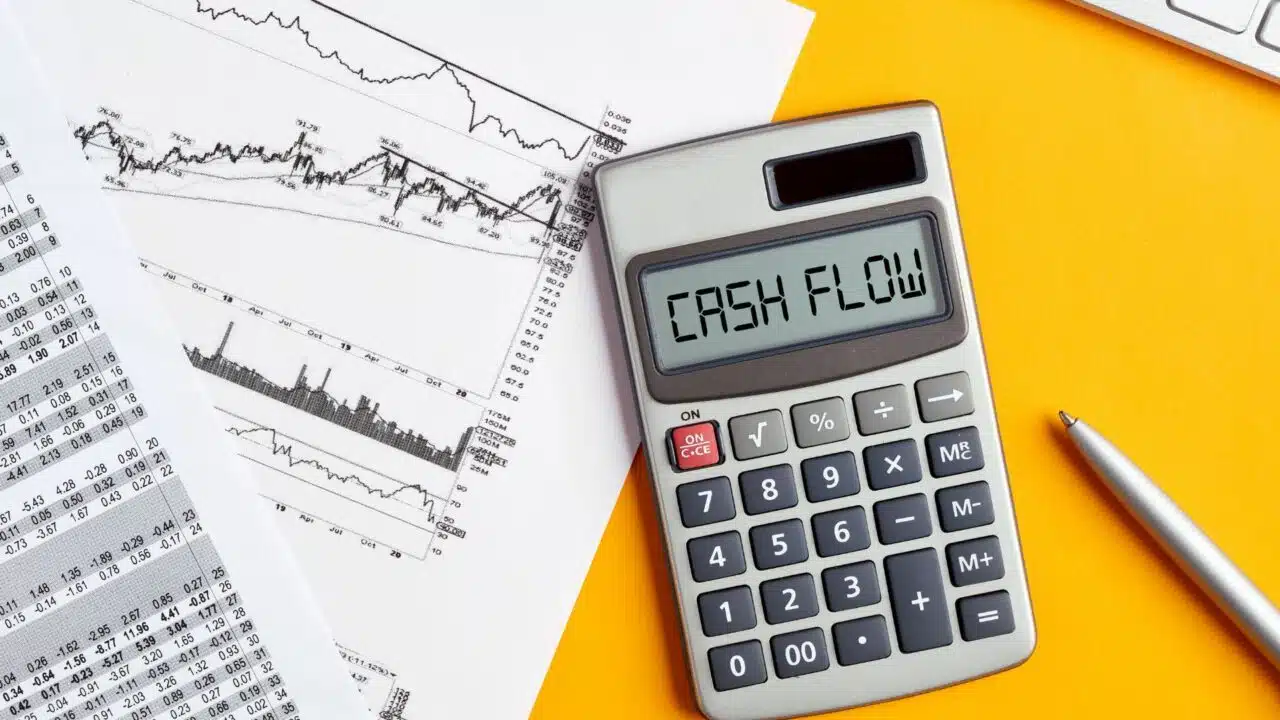Article Summary (TL;DR)
✅ Accurate forecasting: The Amazon Investment Calculator provides reliable estimates of future investment growth.
✅ Compound interest: Understand the power of compound interest and how it can significantly impact your investment returns.
✅ Customization: Customize your inputs to match your specific financial goals and risk tolerance.
Running an Amazon business can feel like steering a ship through unpredictable waters.

One minute, sales are booming, and the next, hidden costs erode your profits. To maintain control, forecasting with precision is crucial.
While no magic Amazon investment calculator will solve all your problems, understanding how to calculate your investments and returns can unlock your profit potential and help you avoid expensive mistakes.
Let’s break down the key calculations you need to forecast profits accurately, ensuring that every business decision is backed by data, not guesswork.
By the end, you’ll have a clear blueprint for evaluating potential investments, determining realistic returns, and understanding how various factors—like Amazon fees, seasonality, and marketing expenses—affect your overall bottom line.
Step 1: Understanding Your True Costs When Using The Amazon Investment Calculator
To forecast accurately, you first need a clear picture of your actual costs. On the surface, these seem simple: the price you pay for your product, the cost of shipping, and Amazon’s selling fees.
However, many hidden costs can sneak up on you, making it essential to identify every potential outlay.
This step is foundational, and missing even small fees can lead to incorrect forecasts and decision-making.
Here’s a breakdown of the major cost categories:
- Product Costs (Landed Costs): This is the total amount you spend to get your product to Amazon’s fulfillment centers, including manufacturing, shipping, customs, and duties. Make sure to factor in all parts of the supply chain.
- Amazon Fees: These include referral fees (a percentage of your selling price), FBA (Fulfillment by Amazon) fees if you use FBA, and any other charges like long-term storage fees or returns processing fees. Amazon has a fee calculator to give you an estimate, but it’s important to monitor any changing fee structures that might impact your bottom line.
- Advertising (PPC) Costs: Amazon Pay-Per-Click (PPC) advertising can boost sales, but it also cuts into profit. Understanding how much you’re paying per click, and your conversion rate, will help you forecast future profitability more accurately.
- Returns and Refunds: It’s easy to overlook, but returns can cause unexpected losses. You’ll need to estimate your return rate based on historical data or industry averages. This will ensure your forecast isn’t overly optimistic.
- Storage Costs: Slow-moving inventory can rack up storage fees quickly, especially if you’re using Amazon’s warehouses. Knowing how long your inventory stays before it sells can give you a more accurate idea of the true cost of holding stock.
Once you’ve mapped out all the cost factors, you’re ready to input these into your calculations when using the Amazon investment calculator.
Remember, your profit potential depends not only on your selling price but on how efficiently you manage these costs.
Step 2: Calculating Your Break-Even Point
The break-even point is where your revenue matches your total costs—neither profit nor loss is made. This is a crucial number to know because it tells you the bare minimum you need to earn from each sale to avoid losing money.

Here’s the formula:
Break-even price = Total cost per unit / (1 – Selling fees percentage)
For example, if your total cost per unit is $10 and Amazon charges a 15% referral fee, your break-even price is calculated as:
Break-even price = $10 / (1 – 0.15) = $10 / 0.85 = $11.76
In this case, you’d need to sell each unit for at least $11.76 to cover all costs. Any price above this would be profit, while pricing below means you’re losing money on each sale.
It’s important to remember that your total cost per unit includes everything, not just the product cost—so be sure to factor in Amazon fees, shipping, and storage.
Step 3: Estimating Profit Margins
Once you have your break-even price, you can start calculating potential profit margins to ensure your pricing and sales strategy supports growth.
Here’s how you calculate profit margin:
Profit margin = (Selling price – Total cost per unit) / Selling price
Let’s assume your product sells for $20, and your total cost per unit (after fees and shipping) is $12. Using the formula, your profit margin would be:
Profit margin = ($20 – $12) / $20 = $8 / $20 = 0.4 or 40%
A 40% margin sounds good, but it’s not the only factor to consider.
Many sellers make the mistake of focusing solely on profit margin without accounting for volume or the impact of PPC spend, refunds, or price fluctuations.
A high margin doesn’t guarantee success if you’re not moving enough units or if hidden costs are piling up behind the scenes.
Step 4: Forecasting Sales Volume
Accurate profit forecasting relies not just on knowing your margins but also on predicting your sales volume. This is specially true when using an Amazon investment calculator.
While it’s impossible to know exactly how many units you’ll sell in the future, you can make educated guesses based on historical sales data, market trends, and seasonality.
A few ways to improve the accuracy of your sales volume forecast:
- Historical Sales Data: Use your own sales data from previous months to estimate future sales. Look at year-over-year trends to see if certain times of the year—like holidays or shopping seasons—result in higher or lower sales volumes.
- Competitor Analysis: Analyze similar products or competitors to get a sense of market demand. If you notice that competitor sales are rising, it could be an indicator that your niche is growing as well.
- Product Launches: If you’re launching a new product, forecasting is more challenging. You’ll need to look at market data, product research, and keyword search volume to estimate demand. Starting conservatively and adjusting as you gather more data is a good approach.
Using these methods, you can estimate your expected monthly sales volume. Multiply this by your projected profit per unit to forecast total monthly profit.
Remember to run different scenarios—optimistic, realistic, and pessimistic—so you’re prepared for fluctuations.
Step 5: Adjusting for Seasonality and Market Fluctuations
Not all products sell consistently year-round. Seasonal demand can dramatically alter your forecasts, especially if you sell products tied to specific events or holidays.
Without accounting for these fluctuations, you could either end up understocked during peak times or overstocked during slow months.
To adjust for seasonality:
- Seasonal Inventory Management: Analyze your sales data to identify your busiest times. Ensure you have enough inventory on hand to meet demand without incurring long-term storage fees.
- Advertising Budget: During peak seasons, you’ll likely spend more on ads to capture additional demand. Adjust your advertising budget accordingly in your forecasts.
- Off-Peak Strategies: During slower months, you might want to reduce ad spend or run promotions to avoid excess inventory. Including these adjustments in your forecast will provide a more realistic view of your profitability throughout the year.
Step 6: Factoring in Cash Flow
Even if your Amazon business is profitable on paper, poor cash flow management can cripple your growth.
Inventory needs, advertising budgets, and supplier payments require cash on hand, and you’ll need to plan ahead to ensure your business doesn’t run into liquidity issues.

To factor in cash flow:
- Lead Times: Estimate how long it takes from placing an order with your supplier to when your product arrives at Amazon’s fulfillment centers. Ensure you have enough cash to reorder before your product runs out, but not so much inventory that it ties up your capital.
- Payment Terms: Most suppliers offer payment terms that allow you to pay a percentage upfront and the rest after delivery. Build these terms into your forecast to ensure you have enough cash flow to cover expenses when due.
- Amazon Disbursements: Remember that Amazon pays sellers every two weeks, so there’s a delay between making a sale and receiving the funds. Ensure you have enough cash on hand to cover expenses while waiting for disbursements.
Empowering Yourself Through Manual Forecasting
While there isn’t a single calculator to handle all of this for you, learning to manually calculate your costs, break-even points, and profit margins is the best way to ensure your Amazon business remains profitable.
By using these investment calculations, sellers can make smarter, data-backed decisions about pricing, marketing, and inventory management.
The result is a clearer understanding of how to unlock your profit potential while mitigating risks and avoiding hidden costs.
In a competitive marketplace like Amazon, the power of forecasting lies in how well you prepare for every variable. Mastering these calculations gives you the confidence to adjust your strategy as needed and ensures long-term success.
Comments
Related Posts
The ultimate guide to Shopify marketing attribution: what works best for your business?
What you’ll learn Have you ever wondered where your customers…
Top 5 Strategies to Sustainable Shopify Growth: Turning One-Time Buyers into Lifetime Customers
What you’ll learn As a Shopify seller, you’re constantly looking…
Mastering Shopify’s UTMs: The Simple Way to Smarter Marketing
Let’s be honest: marketing your Shopify store without tracking what’s…








Leave a Reply